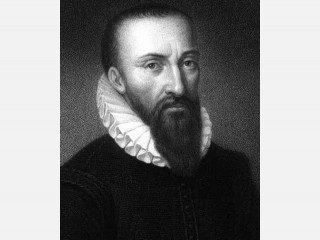
Ambroise Pare biography
Date of birth : -
Date of death : -
Birthplace : Laval, France
Nationality : French
Category : Science and Technology
Last modified : 2010-11-26
Credited as : Military surgeon, ,
The French military surgeon Ambroise Paré (1510-1590) restored and reformed the surgical art through his practice, writings, and personal leadership to earn the sobriquet "father of modern surgery."
Ambroise Paré was born in Bourg-Hersent (now absorbed into Laval). His father seems to have been barber-surgeon to the Comte de Laval. His elder brother and his brother-in-law were also barber-surgeons, under whom he may have served his apprenticeship. From 1532 to 1537 Paré served under the surgeons of the Hotel-Dieu in Paris as a clinical assistant studying anatomy and surgery. This experience, unusual for the times, Paré acknowledged was of the greatest importance to his future career.
Unable to pay for licensure, Paré joined his patron, René de Montejan, a colonel general of infantry, as military surgeon in the French expedition of 1537 to Turin. In his first campaign he realized that, on the basis of the poisonous nature of gunpowder, the accepted method of cauterizing gunshot wounds with boiling oil was destructive, and he therefore substituted more humane treatment.
On the death of Montejan in 1539, Paré returned to Paris now able to pay his fees to be accepted into the Company of Barber-Surgeons. A few months later he married Jeanne Mazelin, daughter of a wine merchant, by whom he had three children.
In Paris, Paré visited the celebrated physician Jacques du Bois (Sylvius), who encouraged him to write on his experiences with gunshot wounds. However, the outbreak of war with Spain saw Paré accompanying the Vicomte de Rohan on campaigns before Perpignan, in the Hainaut, and before Landrecies. This delayed the completion of his first book, The Method of Curing Wounds Made by Arquebus and Other Firearms (1545). Written in the vernacular instead of Latin, the book had a practicality and sound common sense that made it instantly popular and its author famous. Thereafter books on his experiences appeared in almost every decade of his long life. His Anatomy, based on Vesalius, contained his important contribution to midwifery, reintroducing podalic version. His texts on surgery reintroduced the ligature in amputation. These many writings were gathered together in his Works (1575), which disseminated his teachings throughout the world.
Paré served in many campaigns, and beginning with Henry II, was surgeon to no less than four successive kings of France. With Vesalius, Daza Chason, and Jean Chapelain, he attended at the tragic death of Henry II, killed in a joust with the Comte Montgomery which eventually split France in civil war. Paré cited the case to establish the fact that the brain can be injured without fracture of the skull. His last piece of writing, The Apology and Voyages, is a supreme literary achievement and unique historical document in which he defends his methods. Paré was the emancipator of surgery, whose modesty and humanitarianism is remembered by his aphorism, "Je le pensay, et Dieu le guarit" (I dressed it, and God healed it).
The Apologie and Treatise of Ambroise Paré, edited by Geoffrey Keynes (1952), contains the Voyages and other important excerpts. Two excellent but rare biographies of Paré are Stephen Paget and Francis Packard, Ambroise Paré and His Times, 1510-1590 (1897), and Life and Times of Ambroise Paré, 1510-1590, edited and translated by Francis Packard (1921). A recent study is Wallace Hamby, Ambroise Paré: Surgeon of the Renaissance (1967). A superb bibliography containing several important essays is Janet Doe, A Bibliography of the Works of Ambroise Paré (1937).
















